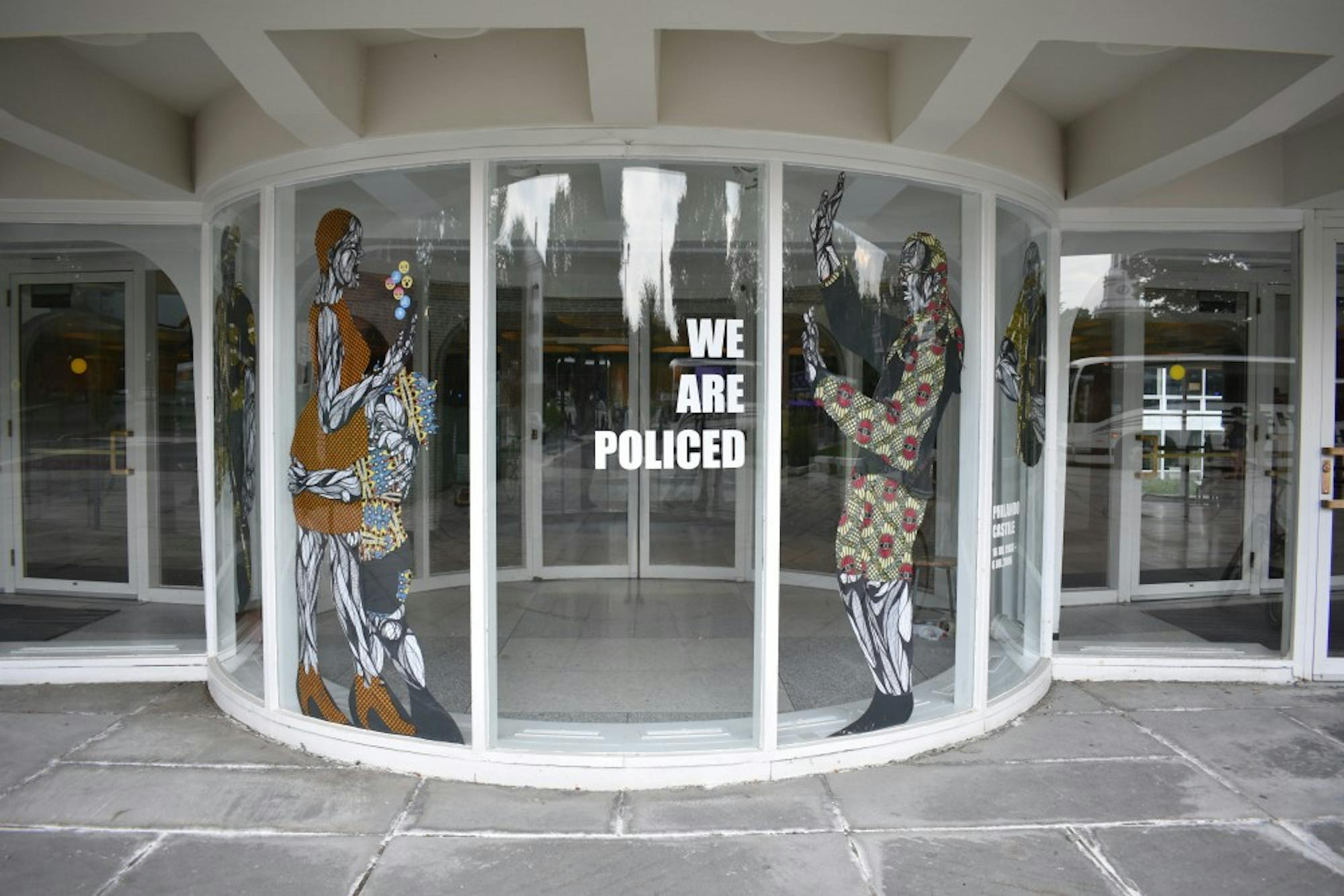To draw attention to the numerous people of color that are killed by police officers every year, Samantha Modder ’17 created an exhibit currently on display in the rotunda of the Hopkins Center for the Arts called “We Are Policed.” Through her art, Modder says she hopes to create a better understanding of issues both for herself and for others.
Modder said that she had always loved to draw from a young age and was inspired by the multiple artists in her family. Although initially intending to be an engineering modified with art major, Modder said that she loved art so much she ended up taking classes every term and eventually decided to double major in studio art and engineering.
Modder primarily draws focusing on using various media such as pens, sharpie and collage.
“I draw people that I care about, people that inspire me, issues that bother me,” Modder said. “I try to understand them somehow by drawing.”
Studio art professor Colleen Randall, who serves as Modder’s honors advisor, said that Modder is one of the department’s strongest studio art majors. She said that Modder makes large scale portraits intriguing to the viewer.
“They always embody a compelling content somehow rooted in her personal experience,” Randall said.
Randall added that Modder is a talented cartoonist who is interested in the relationship between images and narrative content.
This relationship, along with Modder’s personal experience, can be seen in her exhibit “We Are Policed.” Modder said she was extremely affected by the case of Philando Castile, a black man who was shot in his car after being pulled over by a police officer. A video of the shooting was live-streamed, which made the incident especially high profile. Modder wanted to express her reaction through her art.
As an intern for the studio art department this summer, she thought the publicity of the space and her message would be more interactive. Modder said that while she was brainstorming, the verdict of the Philando Castile case against the police officer who shot him was announced.
Castile’s case inspired her to do more research about those killed by police officers, specifically people of color since they are killed at a higher rate.
“It’s just really shocking when you’re scrolling through all these names,” Modder said. “I think that was something that really affected me, and I kind of wanted that impact [in the exhibit].”
Anneliese Thomas ’19, the inclusivity chair of her sorority, Chi Delta, thought Modder accomplished her goal. She said she was simply walking to the Hopkins Center to pick up a package when she saw the exhibit and stopped in her tracks. Thomas said she went around the exhibit and read all the information because she was eager to learn more about the artist.
Thomas added that she was excited to see an exhibit displaying an issue that she personally finds to be extremely important.
“I feel like a lot of people in Hanover live in a little bubble,” Thomas said. “The kind of issues that affect me or worry me don’t really seem to be of concern for other people, so I think it was something that I saw and was like, ‘Wow, it’s great to raise awareness.’”
Modder chose to depict in her exhibit a representation of Castille along with the officers, his wife, and child present; however, she said it was also important for her to include the names of so many other whose lives have been taken.
“Yes, [Castile’s] is a very sad case, but there are so many people who won’t make the news and won’t make trial and no one will hear about,” Modder said.
In order to include all of these people in her exhibit, Modder wrote the name of each person killed by the police from January 2014 up to the present in the exhibit.
Modder added that she hopes to demonstrate the ongoing nature of the problem with her exhibit. She said she still has tape on the glass where the names are written to demonstrate that she is continuing to write down more names of those killed by the police.
“It doesn’t look aesthetically nice, but I’m putting it there so people know that the artist keeps coming back to write more names,” Modder said.
Modder added that simply writing the names was a very reflective process for her, which she hopes people can take away from viewing the exhibit.
Thomas echoed a similar perspective, and said that while she was walking by the exhibit again with a friend, her friend was also struck by the sheer number of names displayed that represent those killed by police officers.
“I think it’s super awesome that people I wish had been aware at first are now becoming aware of [the issue],” Thomas said.
“We Are Policed” will continue to be exhibited in the rotunda of the Hopkins Center for the Arts until August 23.




